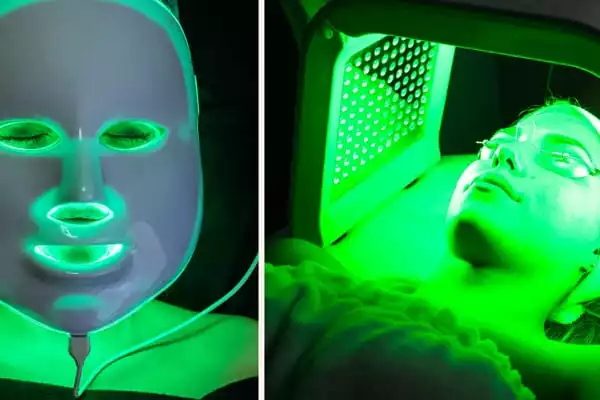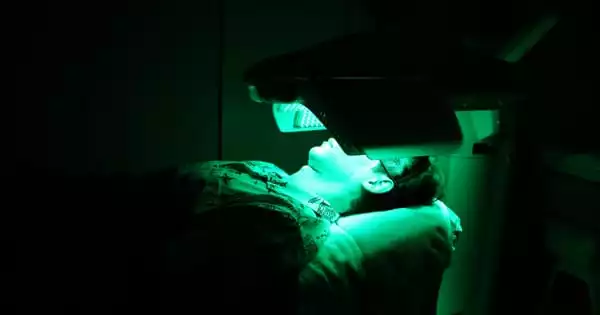According to a new study, green light therapy reduced the pain intensity of the headache phase and the number of days per month participants experienced migraine headaches by roughly 60%. For ten weeks, participants will utilize an LED green light strip at home every day. Following that, their level of discomfort, use of pain medicines, and quality of life will be evaluated. At the moment, research on green light therapy is quite limited, particularly in terms of how green light affects migraine attacks in individuals.
According to new research from the University of Arizona Health Sciences, persons who suffer from migraine may benefit from green light treatment, which has been demonstrated to lessen the frequency and intensity of headaches as well as enhance patient quality of life. According to the Migraine Research Foundation, migraine is the third most common condition in the world, impacting 39 million individuals in the United States and 1 billion worldwide.
“This is the first clinical study to evaluate green light exposure as a potential preventive therapy for patients with migraine, ” said Mohab Ibrahim, MD, PhD, lead author of the study, an associate professor in the UArizona College of Medicine — Tucson’s Department of Anesthesiology, Pharmacology, and Neurosurgery and director of the Chronic Pain Management Clinic. “As a physician, this is really exciting. Now I have another tool in my toolbox to treat one of the most difficult neurological conditions — migraine.”
We treated green light as a medicine in this research. It’s not any ordinary green light. It must have the proper intensity, frequency, exposure time, and exposure modalities. There is a sweet spot with light, just as there is with drugs.
Dr. Mohab Ibrahim
Green light exposure reduced the frequency of headache days per month by almost 60% on average. The majority of trial participants — 86 percent of episodic migraine patients and 63 percent of chronic migraine patients — reported a reduction in headache days per month of more than 50 percent. Chronic migraine has 15 or more headache days per month, whereas episodic migraine has up to 14 headache days per month.
“The average benefit was statistically significant overall. The majority of the people were overjoyed” Dr. Ibrahim spoke about the volunteers, who were given light strips and instructions to complete the study at home.
“When we enlisted people, we told them they had to return the lamp at the end of the study, which was one of the ways we judged participant satisfaction. But, at the end of the study, we gave them the choice of keeping the light, and 28 of the 29 chose to do so.”
Dr. Ibrahim and co-author Amol Patwardhan, MD, Ph.D., both of the UArizona Health Sciences Comprehensive Pain and Addiction Center, have been researching the effects of green light exposure for several years. This preliminary clinical trial included 29 participants, all of whom had episodic or chronic migraine and had failed various standard therapy, such as oral medicines and Botox injections.

“Despite recent breakthroughs, migraine headache treatment remains difficult,” stated Dr. Patwardhan, an associate professor and vice-chair of research in the Department of Anesthesiology. “Nonpharmacological therapies, such as green light, can be extremely beneficial to a wide range of individuals who either do not want to be on pharmaceuticals or do not respond to them. The beauty of this strategy is that there are no negative side effects. It appears to improve sleep and other quality of life measures, if at all.”
Patients were exposed to white light for one to two hours per day for ten weeks during the trial. After a two-week respite, they were exposed to green light for ten weeks. They conducted regular surveys and questionnaires to document the number of headaches they had and the strength of those headaches, as well as the quality of life variables such as the capacity to fall and stay asleep or to perform work.
Green light exposure led in a 60% reduction in pain, from 8 to 3.2 on a numeric pain scale of 0 to 10. Green light therapy significantly reduced the duration of headaches and enhanced participants’ abilities to fall and remain asleep, accomplish chores, exercise, and work.
None of the study participants reported any side effects of green light exposure.
“We treated green light as a medicine in this research,” Dr. Ibrahim explained. “It’s not any ordinary green light. It must have the proper intensity, frequency, exposure time, and exposure modalities. There is a sweet spot with light, just as there is with drugs.”
Dr. Ibrahim has been approached by physicians from all over the world, including Europe, Africa, and Asia, who have all requested the green light parameters and schematic design for their own patients. “As you might expect, LED lighting is inexpensive,” he explained. “Especially in locations where resources are few and individuals must think twice before spending their money, offering something economical is a wonderful choice to consider.”
Cephalalgia, the journal of the International Headache Society, released the study, “Evaluation of green light exposure on headache frequency and quality of life in migraine patients: A preliminary one-way cross-over clinical experiment,” online.
“These are fantastic discoveries, but this is just the beginning,” Dr. Ibrahim explained. “As a scientist, I’m quite interested in how this works since understanding the mechanism will allow me to apply it to other scenarios. I can use it as a tool to alter biological systems in order to achieve as much as possible.”





